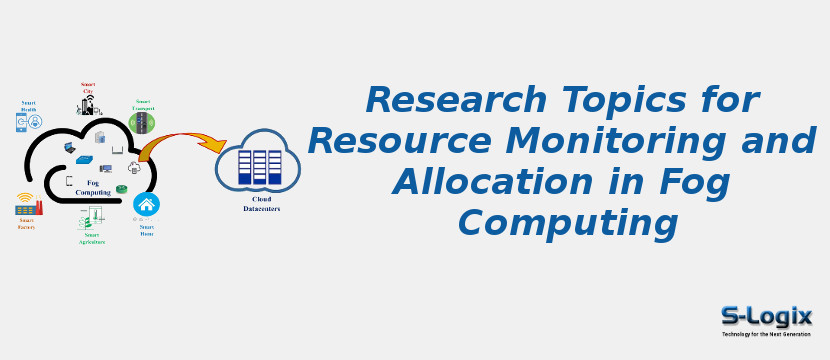Resource monitoring and allocation in fog computing is the process of tracking, analyzing, and controlling the utilization of computing, storage, and network resources in a fog computing environment. Monitoring services typically include security monitoring, application monitoring and resource monitoring.
It is important for providing efficient and effective deployment of fog computing services and applications and ensuring that resources are used optimally and fairly. The goal of resource monitoring and allocation in fog computing is to optimize resource utilization, improve system performance, and ensure that the fog computing environment is reliable and scalable.
Resource monitoring and allocation can be performed through various techniques such as performance measurement, resource utilization tracking, and capacity planning. The techniques help monitor resource usage, predict future resource requirements, and allocate resources based on priority and demand.
Efficient resource monitoring and allocation can provide resource information in an accurate manner that includes :
• System robustness: Detecting the system overuse and underuse by taking decisive action.
• Accurate billing: Maintaining the information about application resource allocation and utilization.
• Guaranteed Quality of service and SLA: Assuring resource availability through disaster resumption and backup.
• Error management: Detecting and reacting to resource breakdown.
• Profitability for users: Providing cost-effective resource.
Resource monitoring and allocation in fog computing is Support and Confidence based(SCB). In this model, resource monitoring agents run in three layers :
• Fog Servers :
The fog server resides in the cloud and is responsible for constructing and administering environments, accepting service requests from the customer, promoting requests to fog leaders, and managing fog leader errors.
• Fog leader :
The fog leader receives service activation requests from fog servers and sends service passing requests to fog devices and sensors.
• Fog Devices :
A fog machine receives a service activation request from a fog leader and spawns more containers demanded by the fog leader.
The following are some of the key advantages of resource monitoring and allocation in fog computing:
• Better quality of service (QoS): Resource monitoring and allocation help to ensure that the resources are used efficiently and effectively, leading to improved QoS for users and applications.
• Increased resource utilization: Resource monitoring and allocation tends to identify underutilized resources and allocate them to other tasks, leading to increased resource utilization and better utilization of available resources.
• Improved system performance: By monitoring resource utilization and allocating resources based on demand, the system can ensure that resources are used effectively, resulting in improved system performance.
The following are some of the limitations of resource monitoring and allocation in fog computing:
• Privacy concerns: Resource monitoring and allocation often require access to sensitive information, such as user data, network traffic, and system utilization, and increase privacy concerns.
• Resource contention: Resource monitoring and allocation can result in resource contention, where multiple tasks compete for the same resources, paving the way to reduced performance and decreased reliability.
• Accuracy: The accuracy of resource monitoring and allocation can be impacted by several factors, including the accuracy of performance measurement tools, the complexity of the fog computing environment, and the dynamic nature of resource utilization.
The following are some of the challenges of resource monitoring and allocation in fog computing:
• Dynamic resource utilization: The utilization of resources in a fog computing environment can be highly dynamic, making it difficult to predict future resource requirements and allocate resources effectively and accurately.
• Smart cities.
• Smart traffic systems.
• Smart containers.
• Health monitoring.
• Multi-tenancy support: Enhancing support for multiple tenants in the fog network to ensure fair resource allocation and prevent service disruption.
• Real-time data processing: Improving real-time data processing capabilities in fog nodes to enable applications such as smart cities and industrial IoT.
• Energy efficiency: Focusing on reducing energy consumption in fog nodes while maintaining performance
• Reliability and fault tolerance: Investigating ways to enhance reliability and fault tolerance in the fog network to ensure reliable resource allocation and monitoring.
• Resource scheduling algorithms: Developing algorithms for efficiently scheduling resources in the fog network based on demand and availability.
• Performance evaluation: Evaluating the performance of different resource allocation and monitoring methods in the fog network.
• Real-time resource monitoring: Developing methods for real-time monitoring of resources in the fog network to ensure efficient allocation and prevent overloading.
